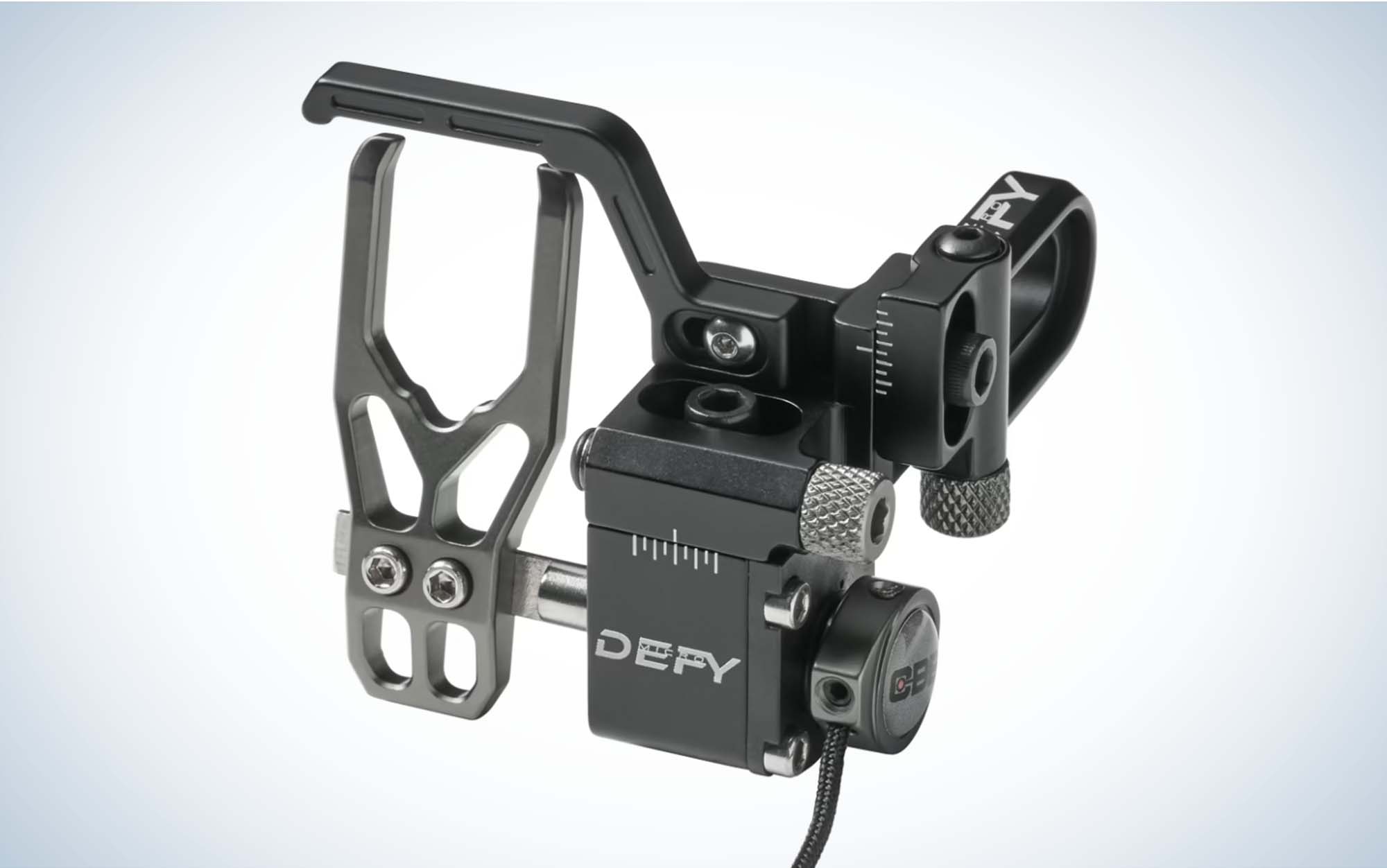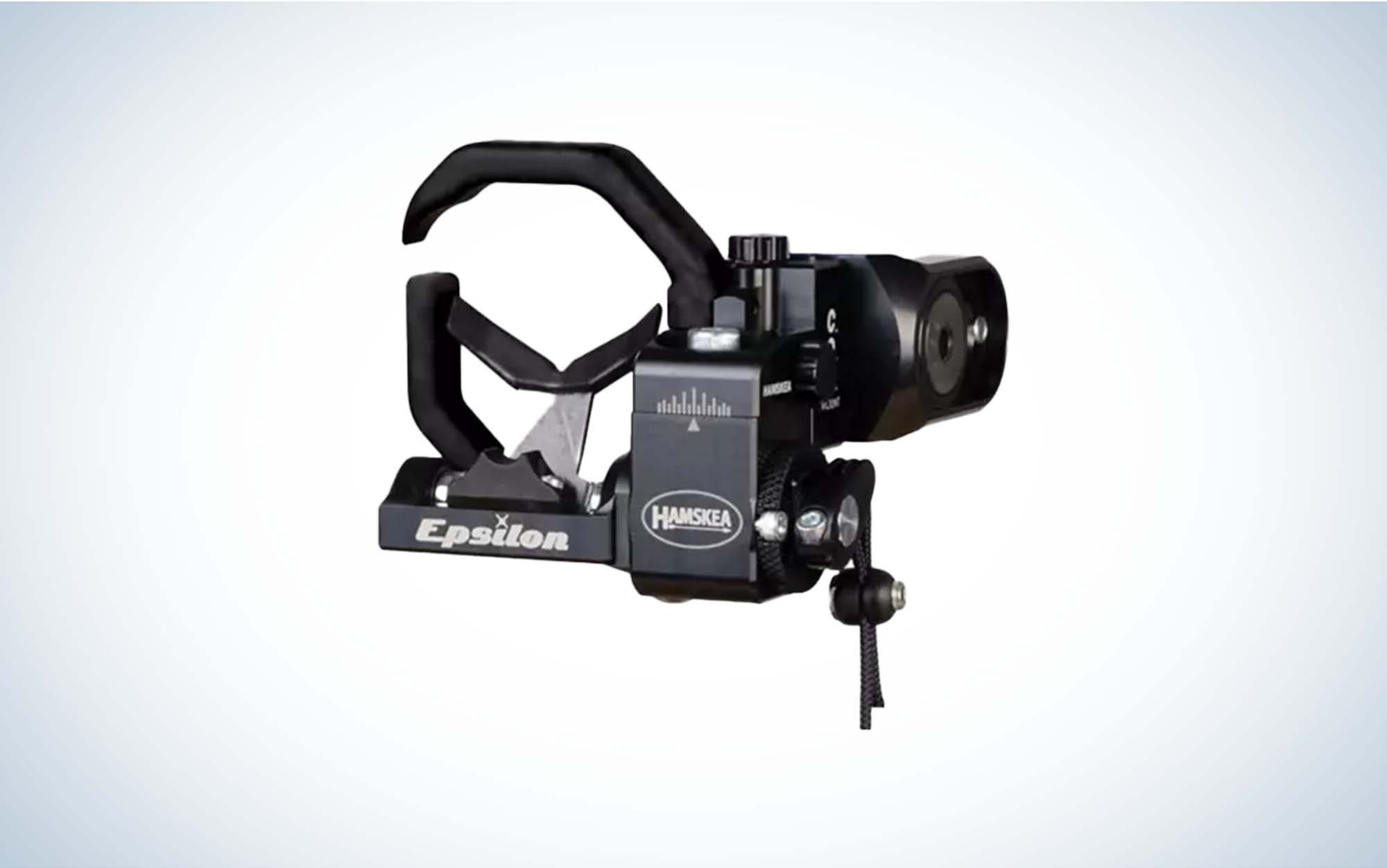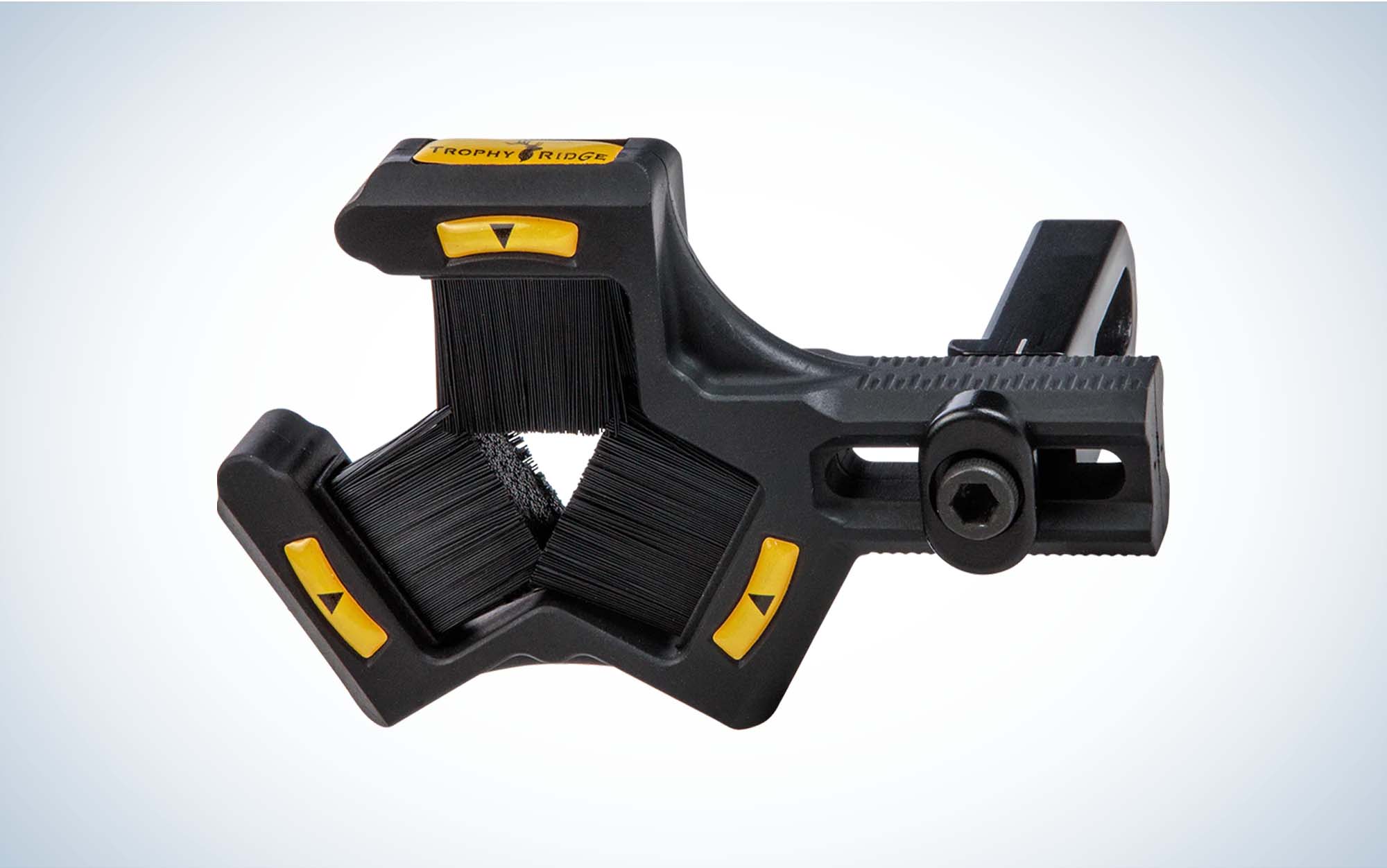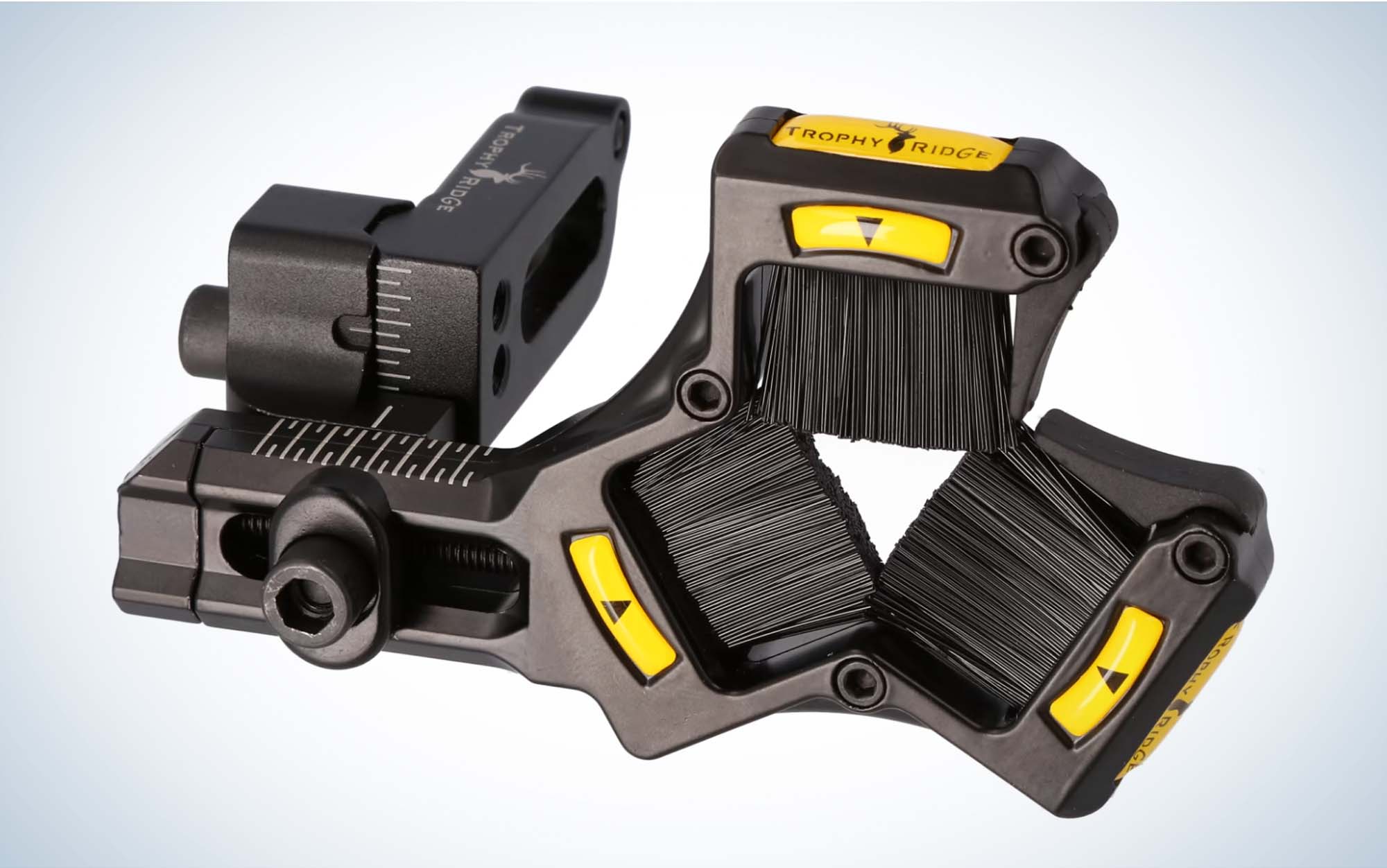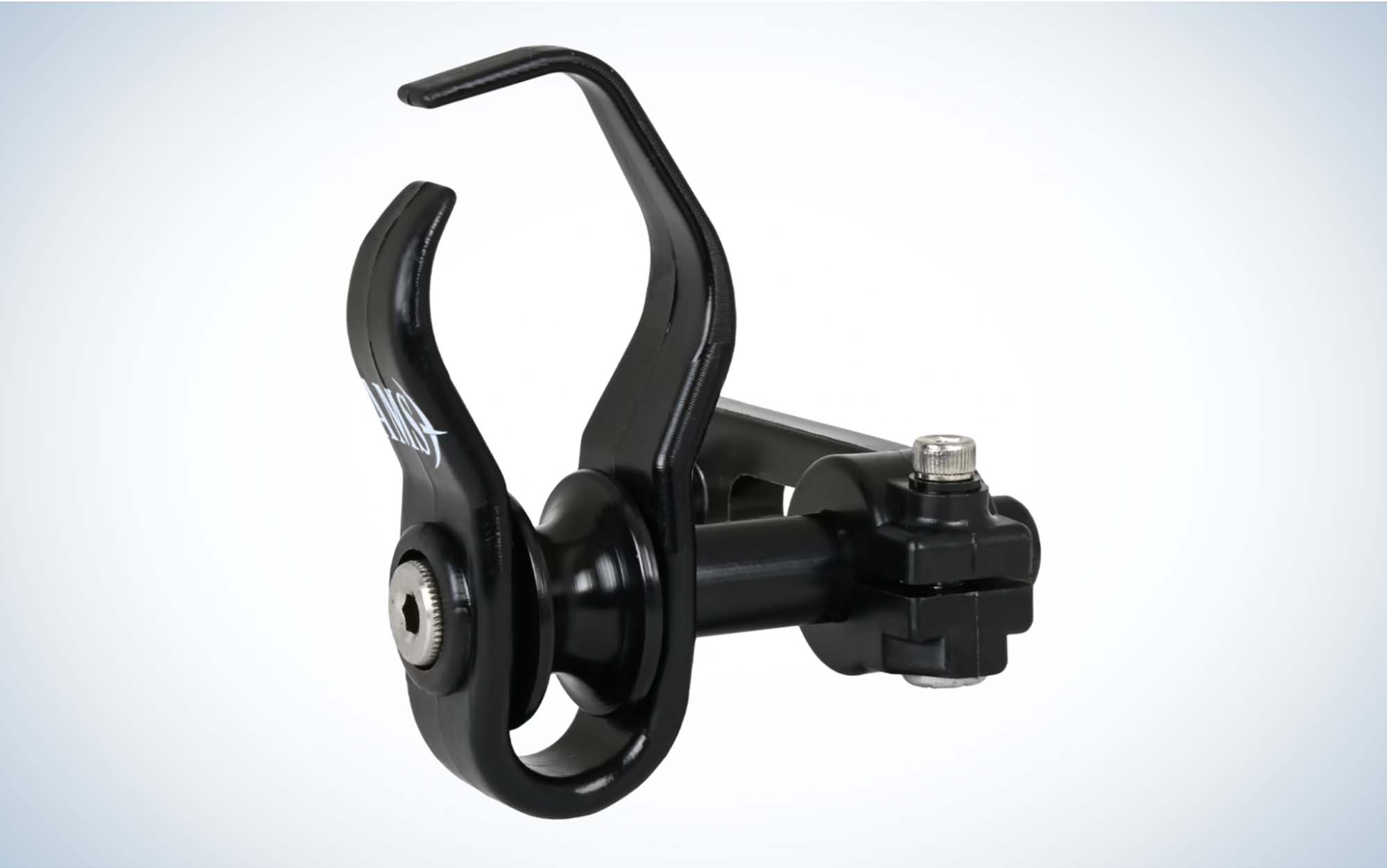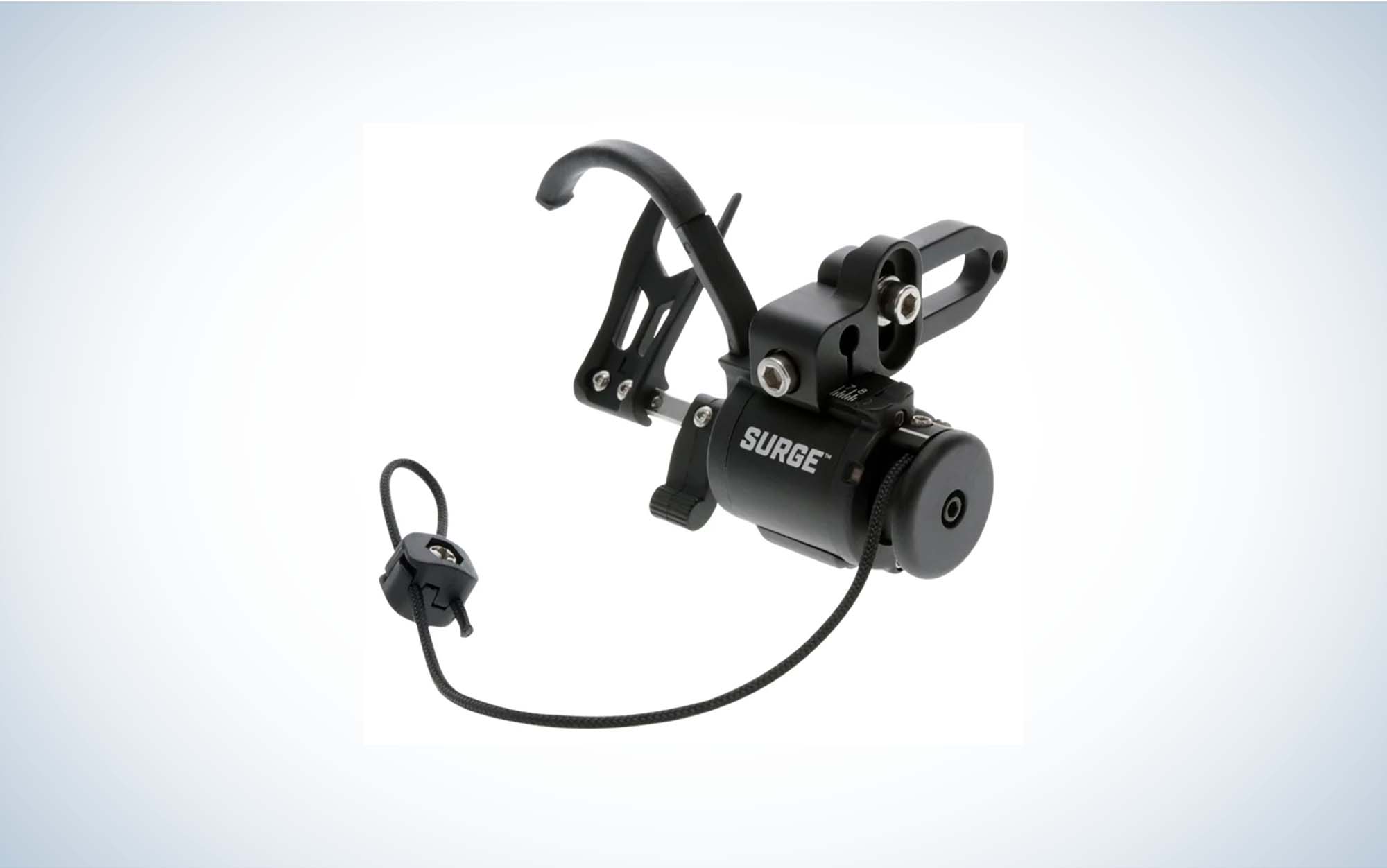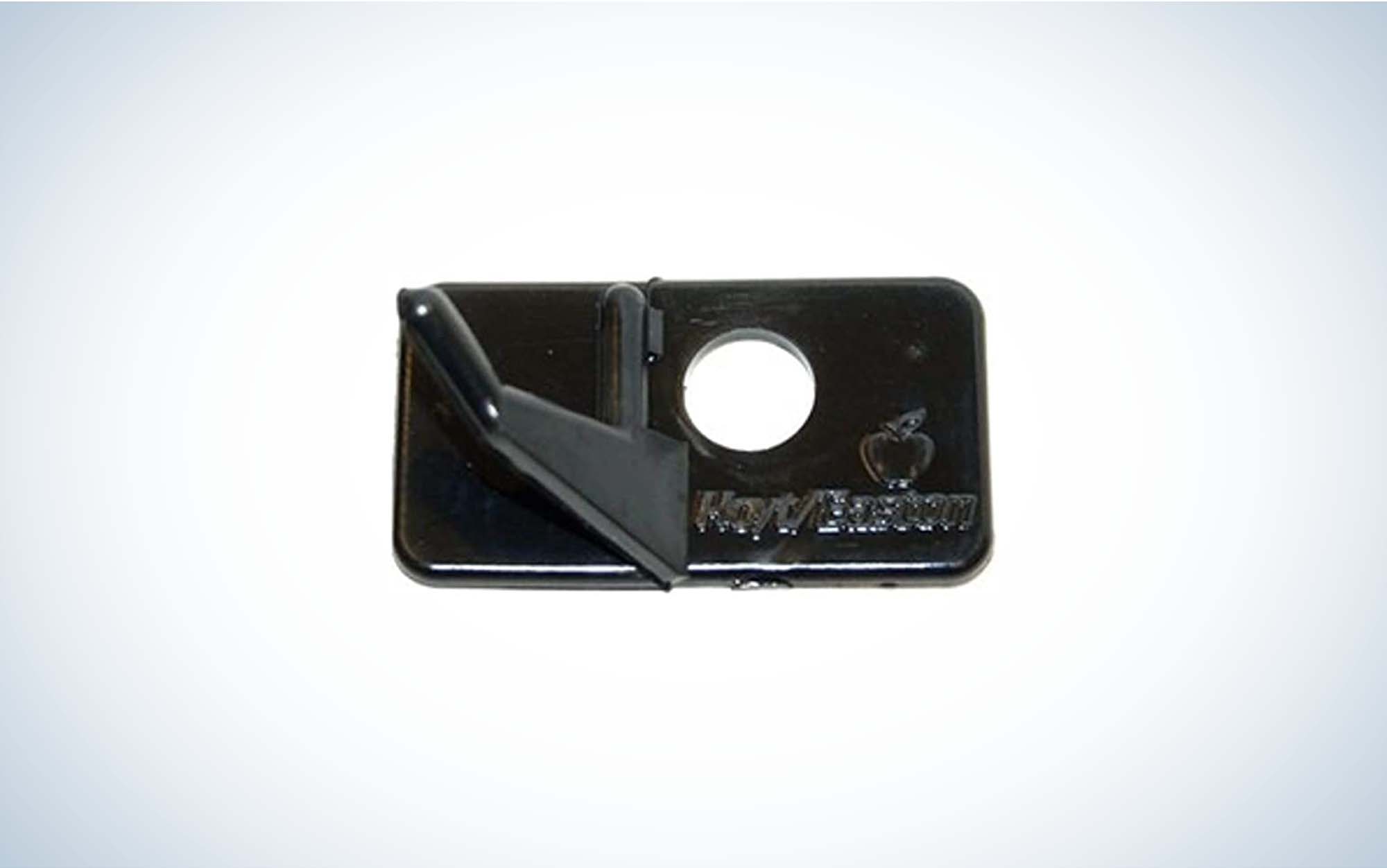We may earn revenue from the products available on this page and participate in affiliate programs. Learn More ›
Updated Aug 22, 2023 4:12 PM
The earliest bows didn’t have arrow rests. Instead, they required the hunter to rest the arrow on top of their fist. If you’ve ever shot an arrow off your knuckles, you know the difficulties it brings. It’s easy to imagine those early archers thinking, “There has to be a better way to hold this arrow.”
Fast forward to the 21st century, with many companies across the globe still working on that better mousetrap. The continued evolution of the arrow rest is great for bowhunters, who have plenty of options at multiple price points. I’ve been able to test and review the best arrow rests, and I picked my favorites to suit any archer.
Best Arrow Rests: Reviews and Recommendations
Best Overall: QAD Ultrarest MXT and Integrate MX
Key Features
- Can be locked in the up position before shooting
- Rest drops away only when the bow is shot
- Draw cord connects to the down cable on the bow
- Micro-adjust knobs for windage and elevation
- Integrate MX has an aluminum launcher
Pros
- Easy installation
- Simple operation
- Arrow is fully contained until the shot
- Micro-adjust simplifies fine-tuning the rest position
- Rest is well built
Cons
The MXT and the Integrate MX are nearly identical rests from QAD. They are both drop-away rests that can be locked in the up position for full arrow containment before the shot, and they both are micro-adjustable for windage and elevation. The primary difference between the two is that the Integrate MX will only work with bows that have a dovetail machined into the riser for mounting. The MXT will work on any bow. But if you have that dovetail on your riser, you want the Integrate MX because it’s sleeker, and the dovetail connection is rock solid.
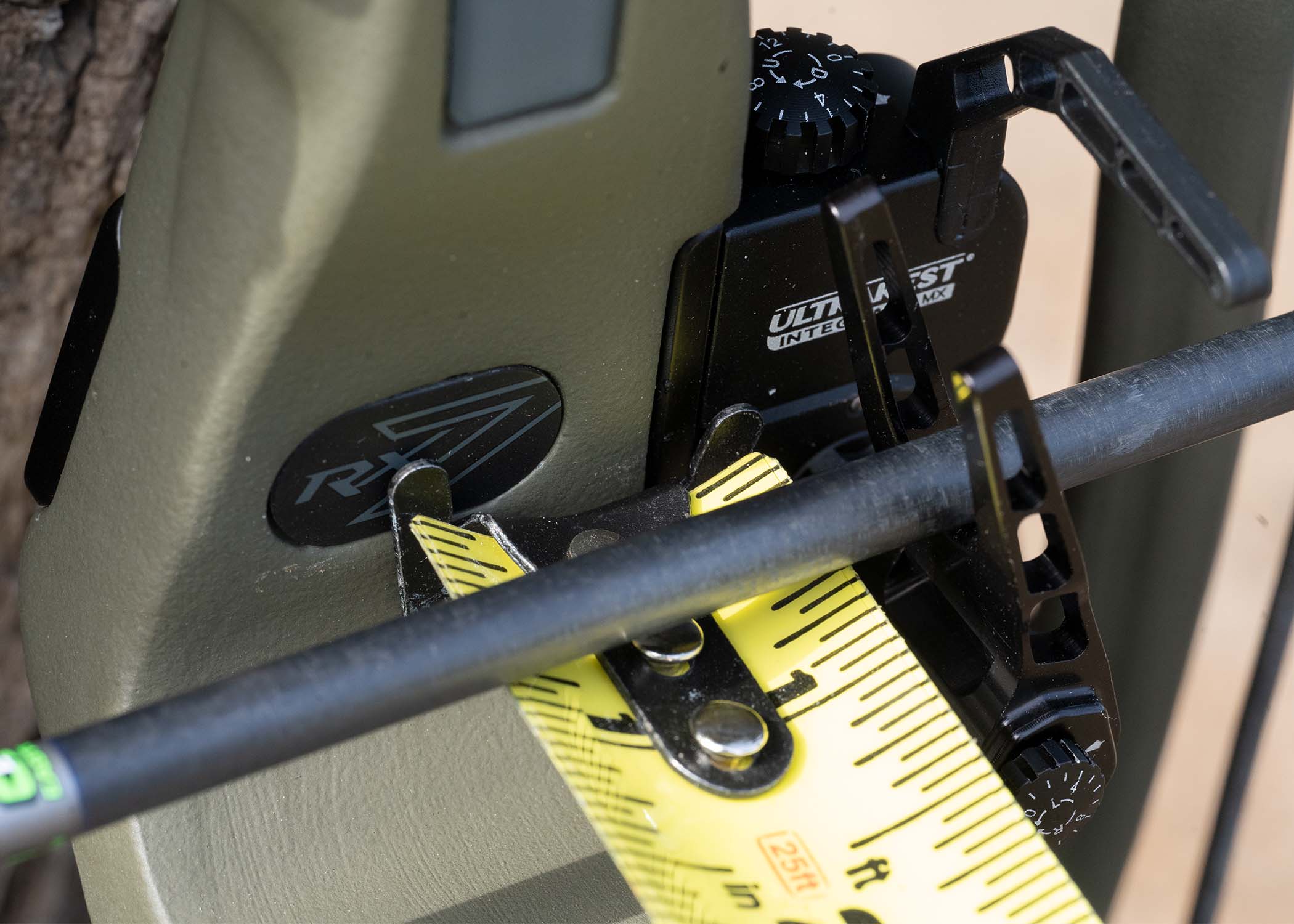
The QAD MXT and Integrate MX are well-built, easy-to-use drop-away arrow rests that do the job of an arrow rest neatly and quietly. There is no extra noise added to your bow because of these rests.
Both of these rests are considered cord-driven drop-away rests, because they employ cords attached to the down cable on a bow. That is, the rest cord is connected to the cable that moves down toward the bottom cam during the draw cycle.

If the rest itself sits flat on the riser, then the draw cord will pull it up as the bow is drawn. Or the user can cock the rest in the up position before drawing, which will keep the arrow contained between the rest forks.
What actually makes the rest drop away is not simply the bow string moving back to the undrawn position. The bow has to be shot. It’s the sudden release of force that comes when the bowstring is released that causes the rest to drop. What’s nice about that is a bowhunter can draw and let down the bowstring, and the rest will stay in the cocked position, keeping the arrow contained.
With some other cable-driven drop-away rests, the rest lies flat on the riser shelf before the string is drawn. The rest lifts up as the string is drawn, and then if the user decides to let down the string, the rest goes back to resting on the shelf, and the arrow is not contained.
Both rests also have micro-adjust knobs for windage and elevation, which makes bow tuning far simpler. Often times in tuning, only slight rest movements are needed. That’s hard to do with a free-moving rest. With the micro-adjust knobs, you can dial in the rest position precisely.
Best New Drop-Away Rest: CBE Defy
Key Features
- All metal construction
- Anti-bounce brake
- Gravity lock keeps the launcher upright
- Micro-adjust elevation and windage controls
- Cable driven
- Low profile
Pros
- Solid construction
- Foolproof launcher lock using gravity
- Micro-adjust controls
- Decent price
Cons
- Side mount only. No integrate version.
The CBE Defy is a new drop-away rest introduced to the market in 2023. It is cable driven, which means the rest’s activation cord is attached to or through the bow’s down-traveling cable. The cord is pulled tight through the draw and then snaps free at the shot, which causes the rest to drop. If the bow is simply drawn back and then let down by the archer without shooting the arrow, then the rest stays upright in the locked position.
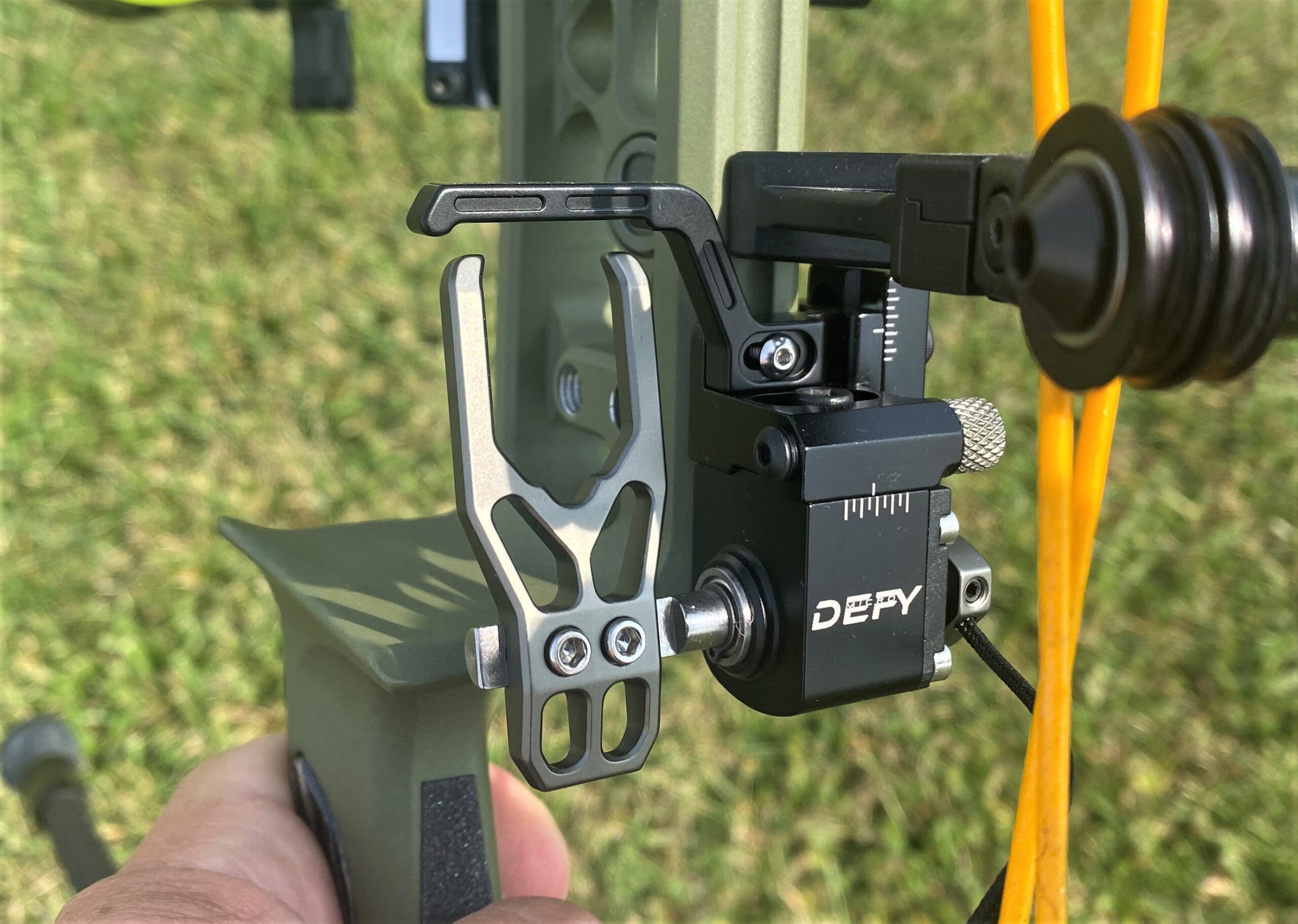
What’s new and unique about the Defy is the gravity-lock system. The Defy is a rest where the launcher arm can be locked upright so that the arrow is fully contained on all sides and cannot fall off the rest. Only if the bow is shot, or the archer manually flips the rest to de-cock it, can the launcher be lowered to the riser shelf.
How companies achieve that launcher lock varies. CBE uses a unique system where gravity causes a metal part to fall into a slot when the rest is cocked. That metal part then holds the rest upright. Gravity is not affected by rust or foul weather, so the locking system cannot fail.
The rest is entirely made of metal. No plastic. That’s great for durability.
The Defy also features micro-adjust controls for elevation and windage, which is rare for a drop-away rest in this price category. That is a rest that retails for around $160. Micro-adjust controls just make life so much easier when tuning a bow. You can make small, incremental adjustments easily.
The brake built into this rest is one of the strongest I’ve ever felt. When this rest flies down, it will not bounce back up into the arrow’s flight path even a little bit. And it keeps the rest super quiet at the shot.
Key Features
- Can be adjusted to fit risers with different thicknesses
- Micro-click adjustments for windage and elevation
- Full containment arm
- Wide “whale-tail” launcher
- Can be set up to function off the top or bottom limb
- Rebound dampener eliminates the need for a spring connecting the draw cord to the rest
Pros
- Pulls the rest down super fast when the bowstring is released
- Rubber coating on all possible arrow contact points keeps this rest quiet
- Will work with low-profile bow-mounted arrow quivers
- Three large ball bearings allow the rest to rise smoothly
- Whale-tail launcher grabs arrow anywhere on the shelf and moves it to the center during the draw
Cons
- Even though there is a full-containment cage to keep the rest from falling off the bow, the launcher can’t be locked in the up position, so the arrow isn’t confined in as tight a space as other drop-aways
- Long cord running from rest to limb can catch brush
There is a segment of the archery community that believes limb-driven arrow rests are the most reliable drop-away arrow rests and they are the fastest to drop. And nobody does limb-driven rests better than Hamskea. Their rests are used by several of the best target archers in the world. And while those target archers can use the Epsilon, a lot of the features Hamskea built into this rest were done so with bowhunters in mind.
The Epsilon features a full-containment arrow cage so a nocked arrow cannot fall off. However, the containment isn’t as secure as a QAD. The whale-tail launcher is wide at the ends, so it can pick up the arrow from any spot inside the cage and then channel the shaft to the center of the rest for every shot. That allows the bowhunter to focus on the target, without worrying about getting the arrow to the right spot on the rest.
It’s a narrow rest that hugs the back of a riser, leaving plenty of clearance for even the tightest bow-mounted quivers. The Centershot Optimized Rest (COR) technology includes different mounting points to account for different riser thicknesses so that the rest is automatically mounted with a center shot of 13/16 inches from the riser. This is a standard starting point for the rest position to get a bullet hole when paper tuning. Often, this is exactly where the rest needs to be for perfect left-right positioning.
The rest can be converted to attach the draw cord to the top or bottom limb. Included is Hamskea’s rebound dampener, which allows the draw cord to be pulled beyond taut to ensure that the rest is pulled all the way down to the riser shelf when the bowstring is released. This dampener enabled Hamskea to eliminate the spring used in previous rests, which easily bends.
Key Features
- Nylon bristles hold the arrow securely
- Bristles give as the arrow flies through on release, so they have minimal effect on flight
- Bolts to the Berger hole and then is adjusted left and right to set the center shot
- The V design allows this one rest to be used with arrows of any diameter
Pros
- Simple to install and use
- Ultralight
- No moving parts to fail
- Costs under $55
Cons
- No elevation adjustment
- Can affect precision accuracy, especially at long range
The Trophy Ridge Whisker Biscuit V arrow rest is ideal for the bowhunter who likes to keep things simple and wants to build a bow without breaking the bank. The Whisker Biscuit rest has proven its reliability and effectiveness in the bowhunting world. This V version simplifies the platform and negates the need for different-sized biscuits depending on arrow diameter. The V notch holds everything from a 4mm up to a 2712, if for some reason, you choose to hunt with one of the fattest arrows made.
Sections of nylon bristles around the arrow form the V. Simply load an arrow into the V, and the bristles push it to where it’s supposed to go. The arrow is held there until you shoot or pull it out. This is a full containment arrow rest that’s ideal for spot and stalk hunts. Just nock an arrow and go.
The question with biscuit-style rests is, “Do they affect arrow flight?” The bristles touch the arrow through the shot, and the fletchings have to punch through the bristles. That has to have some affect, right? At the most common bowhunting distances (under 50 yards), you’re good. If you see any impact variances, they’re going to be minor. Beyond 50 yards, you could start seeing some arrow impact variances, and hand-torque issues are likely to be magnified.
Best Biscuit Rest: Trophy Ridge Whisker Biscuit V-Max
Key Features
- V-shaped biscuit accommodates various arrow diameters
- Fully contains nocked arrows so they can’t fall out
- Micro-adjust windage and elevation
- All aluminum
- Ambidextrous
Pros
- Super simple to set up and use
- No moving parts to fail or freeze
- Micro-adjust controls eliminate many issues associated with setting up these rests
- Affordable
Cons
- Generally considered not as accurate as other types of rests due to bristle contact on arrows
A couple of manufacturers make biscuit-style arrow rests, but the Whisker Biscuit is considered the OG. These rests feature a simple circle of flexible nylon bristles, with a hole in the center for the arrow. You might think they are all the same, but they aren’t
The Whicker Biscuit V-Max is the most advanced of the biscuit rests. It’s much nicer to work with than the simpler versions.
First off, it features a V-shaped bristle containment area. That V allows you to shoot basically any diameter arrow through this rest. With other biscuits, you have to change the bristle containment discs to account for smaller or larger arrows.
The most basic biscuits only feature windage adjustments. That can lead to problems if the Berger hole on your bow, where the rest bolt is connected, sits low on the shelf. The closer your arrow sits to the shelf, the more likely you are to have clearance issues through the draw cycle – especially if your arrow is tipped with a large, fixed-blade broadhead.
The V-Max features windage and elevation adjustments. And they’re micro-adjustable. So rather than just loosening a bolt and working the rest left or right or up or down by hand, you loosen a bolt and then use your Allen key to turn a screw that moves the rest via a gear system. This allows you to make small, precise adjustments to the rest position.
The V-Max is all aluminum, so there are no plastic parts to crack. And because there are no moving parts to synchronize, it’s a snap to install this rest and adjust it for tuning.
Many bowhunters like to keep their gear as simple as possible to eliminate mechanical failures. The V-Max is a rest that fits right in their wheelhouse.
You’ll see the Whisker Biscuit V as my best budget arrow rest pick, which still stands since the V-Max is almost twice as expensive. But if you don’t mind spending the extra cash, the V-Max is a lot more versatile and easier to work with.
Best Bowfishing Rest: AMS Tidal Wave
Key Features
- Full containment of the arrow
- Roller to minimize friction and wear
- Easy to set up
Pros
- Full containment keeps the arrow in place even when there’s fast action on the boat
- The roller eases the wear and tear caused by heavy, fiberglass fishing arrows
- Easy to load an arrow
Cons
- If you want to use your bow for anything other than bowfishing, you’ll have to remove this rest because it’s not good for shooting regular arrows.
The Tidal Wave is a simple arrow rest compared to some high-end target and bowhunting rests. Yet it’s more advanced than most other bowfishing rests on the market. Heck, I’ve seen some bowfishermen use a bolt for a rest.
It’s a bolt-on rest with two arms that almost fully enclose the area where the arrow sits through the draw cycle. Having a full-capture rest for bowfishing is a killer feature because, when the action is hot on a hot summer night, you can swing back and forth on the bow of the boat trying to get on the closest fish.
There’s a roller in the center of the rest, which is ideal for those heavy, fiberglass bowfishing arrows. Those arrows generate a ton of friction through the drawing and shooting cycles. Running over fixed metal or plastic can wear out the arrow and the rest. But the Tidal Wave’s roller eases that wear and tear.
The Tidal Wave is an arrow rest that acknowledges the fact that bowfishing is still archery, and it’s kind of important to be able to launch arrows accurately. Yes, the shooting is often very close – usually measured in feet rather than yards – but having a good arrow rest is still a critical part of the game.
Key Features
- Cable driven
- Only drops when the bowstring is released, so the rest stays up when the string is simply let down
- Forked launcher and overhead cage fully contain arrow when the rest is cocked
- Delayed trigger supports the arrow longer on the drop for better accuracy
Pros
- Simple to set up
- Costs under $75
- Can be cocked in the up position for full arrow containment
- Cable driven but shot activated
Cons
- Not the slimmest profile
- No micro-adjust in windage and elevation
The Apex Surge is a simple, cable driven drop-away that has some of the features of the more expensive best arrow rests, yet it costs less than $75. Many drop-aways in this price category operate by having the launcher rise and fall as the bow is drawn and let down. Having one that can be cocked in the up position for full arrow containment adds a lot of value.
The windage and elevation are set simply by loosening screws and moving the rest to the desired position. This can make the setup take longer than rests with micro-adjust knobs, but again, it runs at a fraction of the price of high-end rests. The Surge clearly has some less expensive components, but it still doesn’t feel cheap, especially for this price.
Key Features
- Holds arrows securely through the shot
- Includes a hole for a cushion plunger if you use one
- Installs by peeling and sticking
- Will fold against the riser as the arrow passes over it
Pros
- Super cheap
- Holds your arrow securely without much interference
- Anyone can install it
Cons
- Best when used with a plunger
The Hoyt Hunter Rest is a plastic, stick-on rest that installs easily in seconds. Some of the best recurve bows allow archers to use a cushion plunger, which is a device installed in the riser next to the rest to cushion the flexing of the arrow as it flies out of the bow. Bowhunters who choose to use a cushion plunger will use a rest, and they need a rest that allows for mounting the plunger. Such rests don’t come any simpler than the Hoyt Hunter.
These things are so inexpensive, you can carry multiple rests with you in case one breaks or the sticker loses its stickiness. Just pop the old one off and stick a new one on.
But don’t be fooled by the ease and cost of this rest. It does the job. Olympic recurve archers use the target version of this rest–that’s how well it does its job. The Hunter is simply beefier than the target version because hunters use heavier arrows, and they’re taking their bows into rougher conditions. Archers who don’t use a cushion plunger can still use the Hunter Rest on their hunting recurves.
Things to Consider When Choosing a Rest
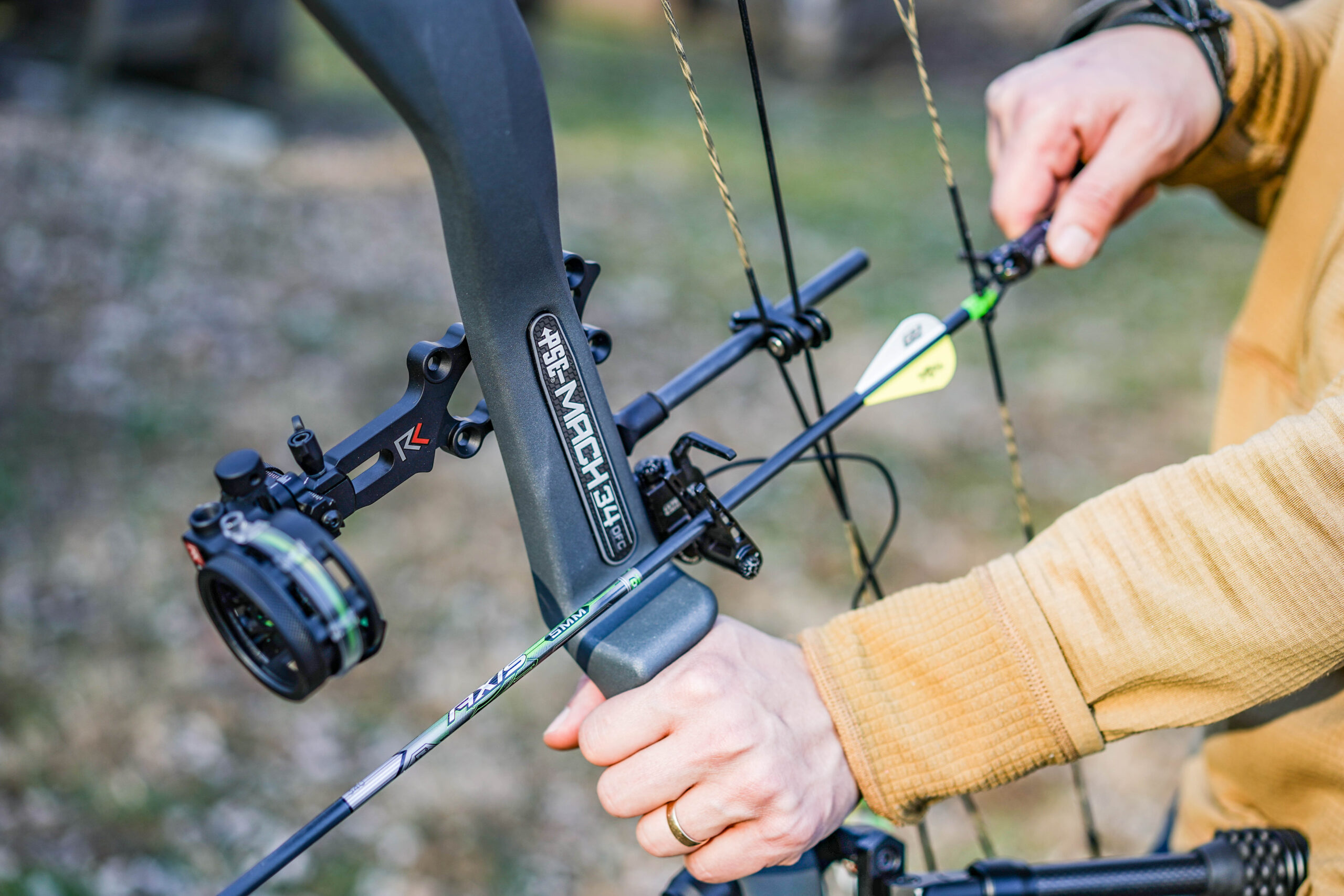
Type of Bow
Whether you hunt with a compound or a traditional bow will take you to two totally different categories of rests. There really is no cross over here. There are rests designed for compound bows and rests designed for recurves and longbows. I have seen recurve archers try to use some of the simpler compound rests on their bows, and it never works out well.
Adjustment
Just like the best bow sights, arrow rests can make tool-less micro-adjustments. The alternative is to loosen a set screw and manually move the rest into position. Micro adjustment is best suited for archers that want to tune their gear because it allows you to make barely perceptible adjustments that can yield noticeable differences in accuracy. If you are going to have a shop paper tune your bow and then call it good, you don’t need a micro-adjustable rest.
Range Limits
How far do you plan to shoot with this rest? If you’re planning to strictly hunt with your bow setup, and you don’t take shots over 40 yards, then which rest you choose isn’t a grave issue.
But if you plan to take long hunting shots, or you want to take your bow to a Total Archery Challenge event, where you might have to shoot targets out to 100 yards, then you want precision equipment. Hunters often look to the target world when it comes to identifying precision gear. In target archery, competitors use equipment that gives them the absolute best chance for success. You will not see a single, even moderately-successful (let alone top-end) target archer use a biscuit-style rest. You will, however, see plenty of cable-driven and limb-driven drop-aways.
Does this mean biscuit rests are “no good” for long-range shooting? Not necessarily. It means target archers have identified better options.
Containment
How you hunt can impact your rest-selection decision. If you are strictly a tree-stand or blind hunter, having a rest that fully contains the arrow while it’s nocked might not be critical. You don’t have to worry about brush or limbs knocking your arrow off the rest.
If you are a spot-and-stalk bowhunter, you’re going to hate not having full containment. If your arrow keeps falling off the rest as you make those last few critical sneak moves to get into shooting position, that’s a problem.
FAQs
Q: Drop away or fixed-position?
This is arguably the biggest question facing compound bowhunters when they choose a rest, because it takes you down one of two very different paths. The drop-away rests promise precision accuracy because there’s nothing to create arrow-contact problems. But the fixed-position rests have no moving parts to potentially fail in critical back-country situations. I mentioned what target archers do, but is precision, long-range accuracy relevant to you? Where you hunt, how you hunt, and how far you plan to shoot will guide you to the right choice.
Q: How much do arrow rests cost?
If you’re a recurve or longbow hunter, rests don’t cost much at all. The Hoyt Hunter costs less than five bucks, while the most expensive recurve rest listed on Lancaster Archery Supply’s website is the Zniper at $99, but that’s more of a target archery rest.
If you’re a compound bowhunter, the price range shifts considerably—$25 to around $300. As you might expect, features and quality adjust the cost of rests considerably.
Q: Do I need any special tools to install a rest myself?
Not necessarily. The main tool you will use is a set of Allen wrenches. The special tool that could come into play is a bow press for compound bows. Any of the cable-driven rests require the rest’s draw cord to be connected to the compound’s downward buss cable. You can connect that cord to the outside of the cable with a clamp, or you can run it through the buss cable below a section of serving and tie a knot in the cord to keep it from pulling back through. The latter method requires a bow press.
Final Thoughts on the Best Arrow Rests
Like many things in archery, there is more than one style of rest to accurately launch your arrow down range. Sure, there are plenty of opinions about the best arrow rests. But when there are supporters for all styles, you know the “right choice” comes down to personal preference. So, it’s up to you to consider your hunting style, equipment expectations, and budget to find the best one for you.

